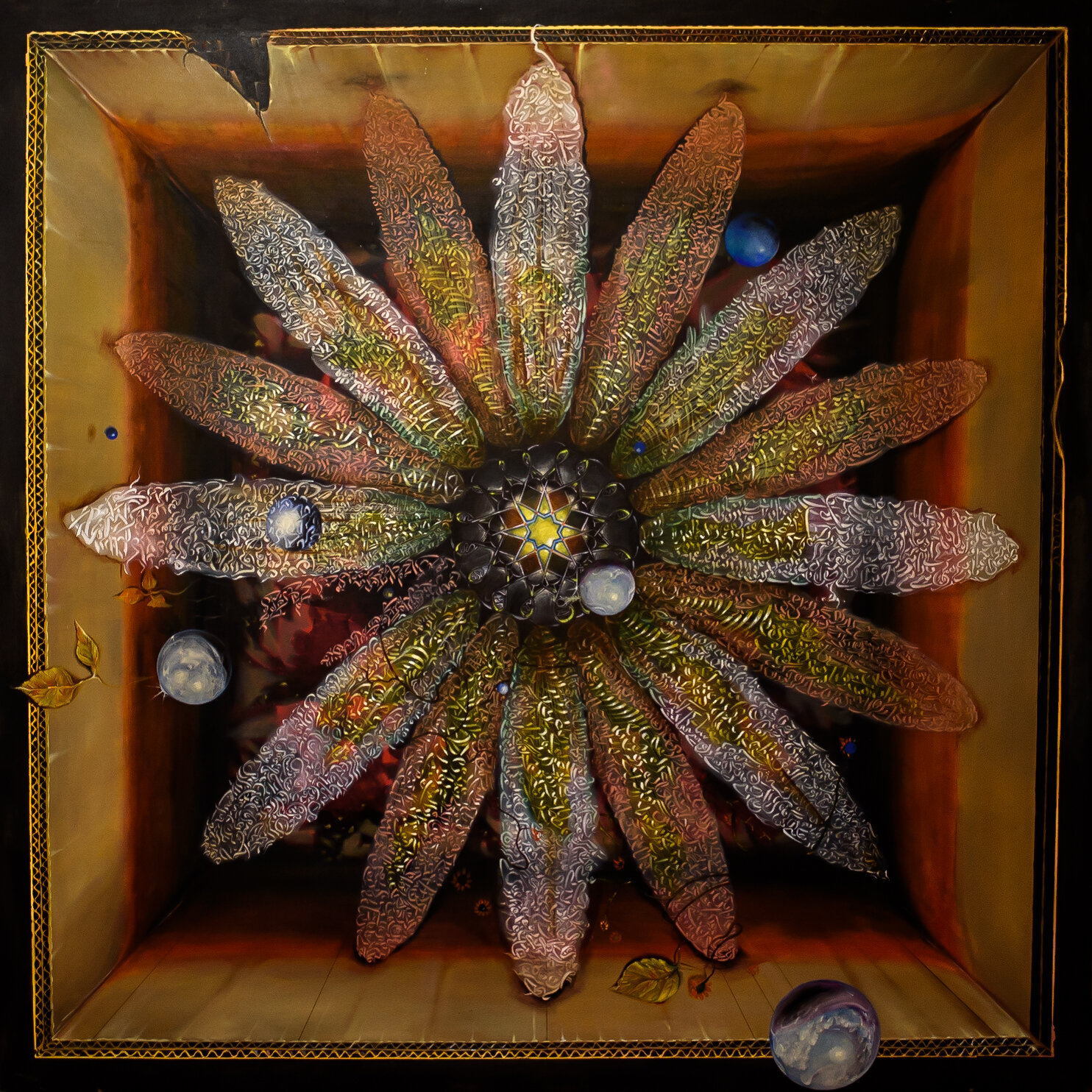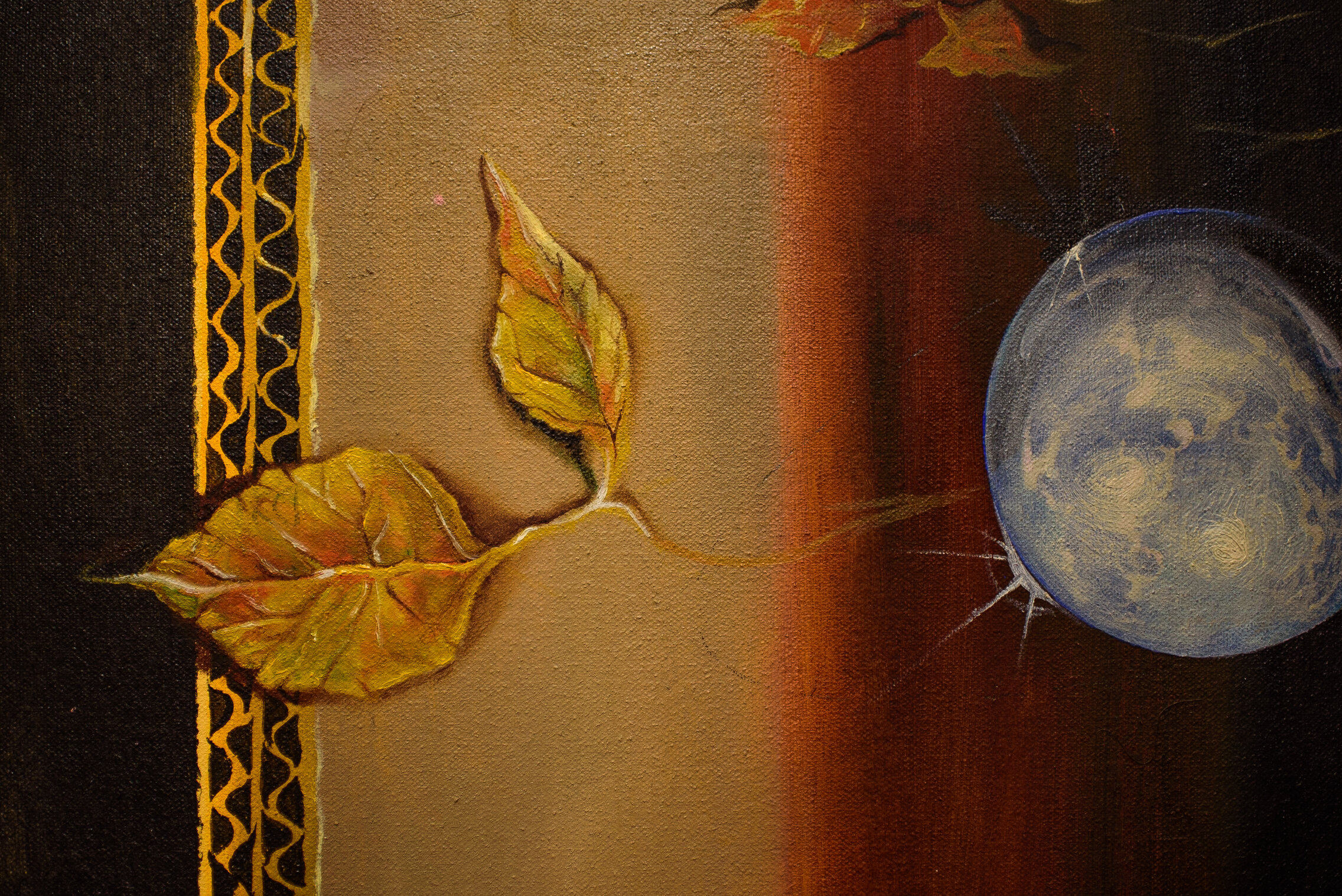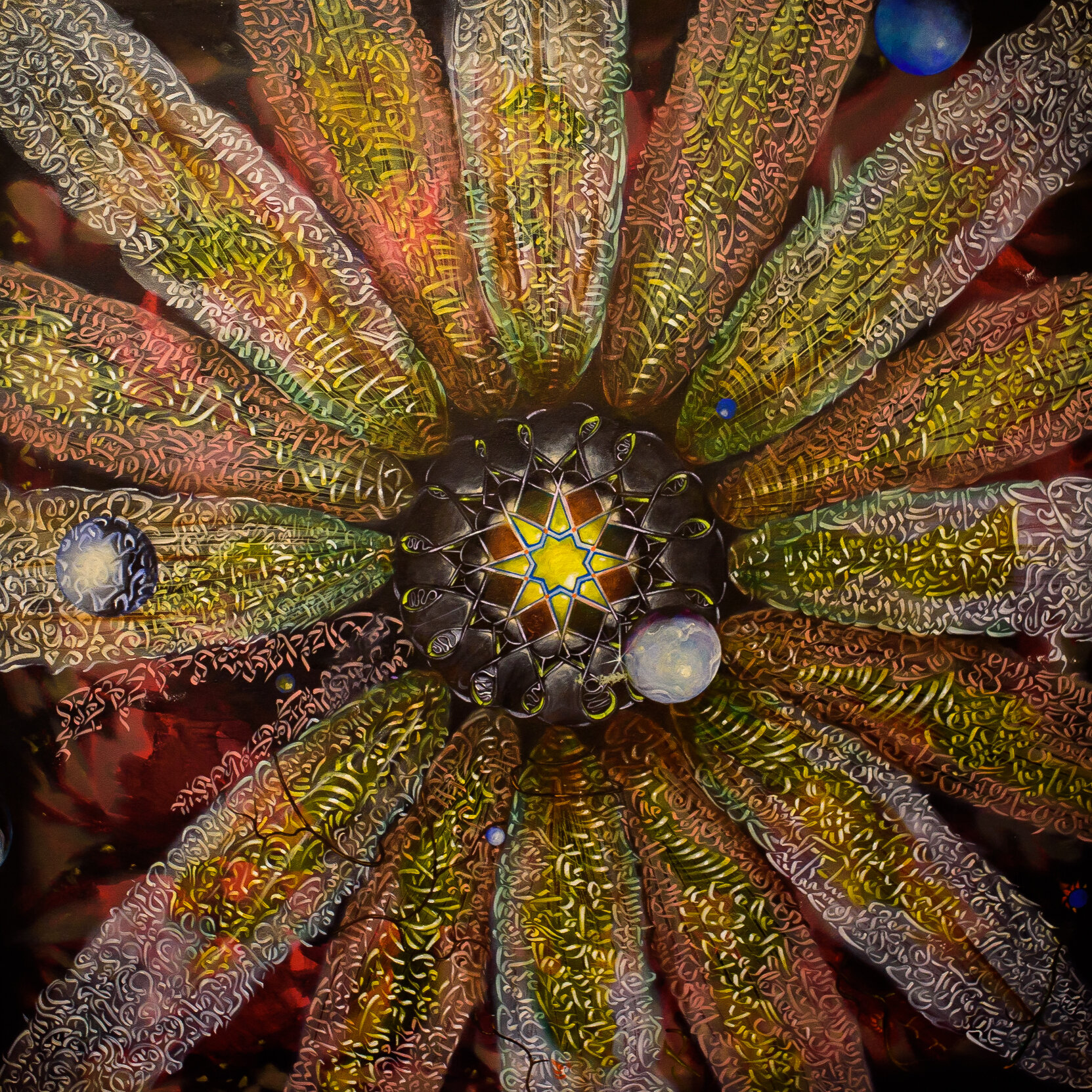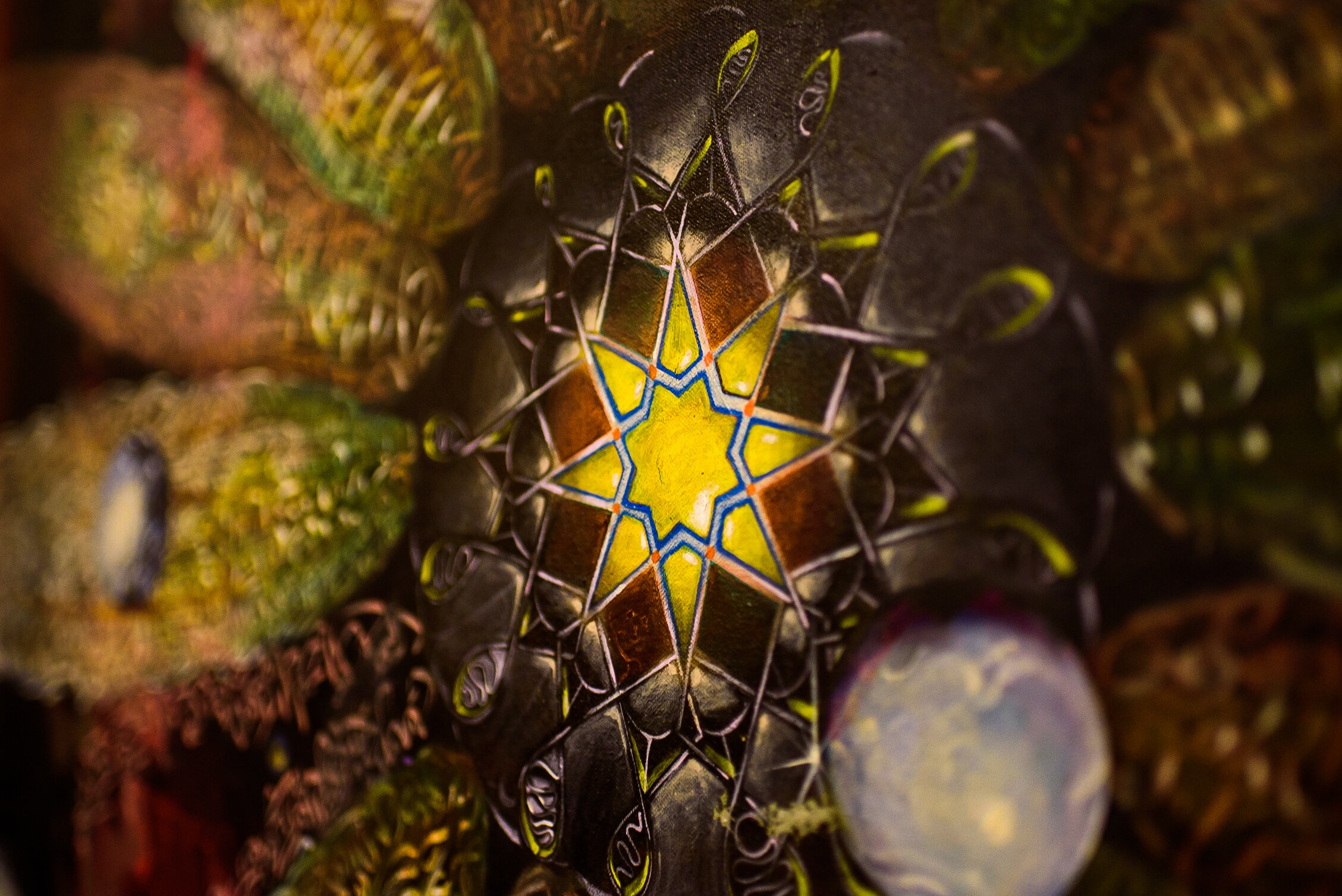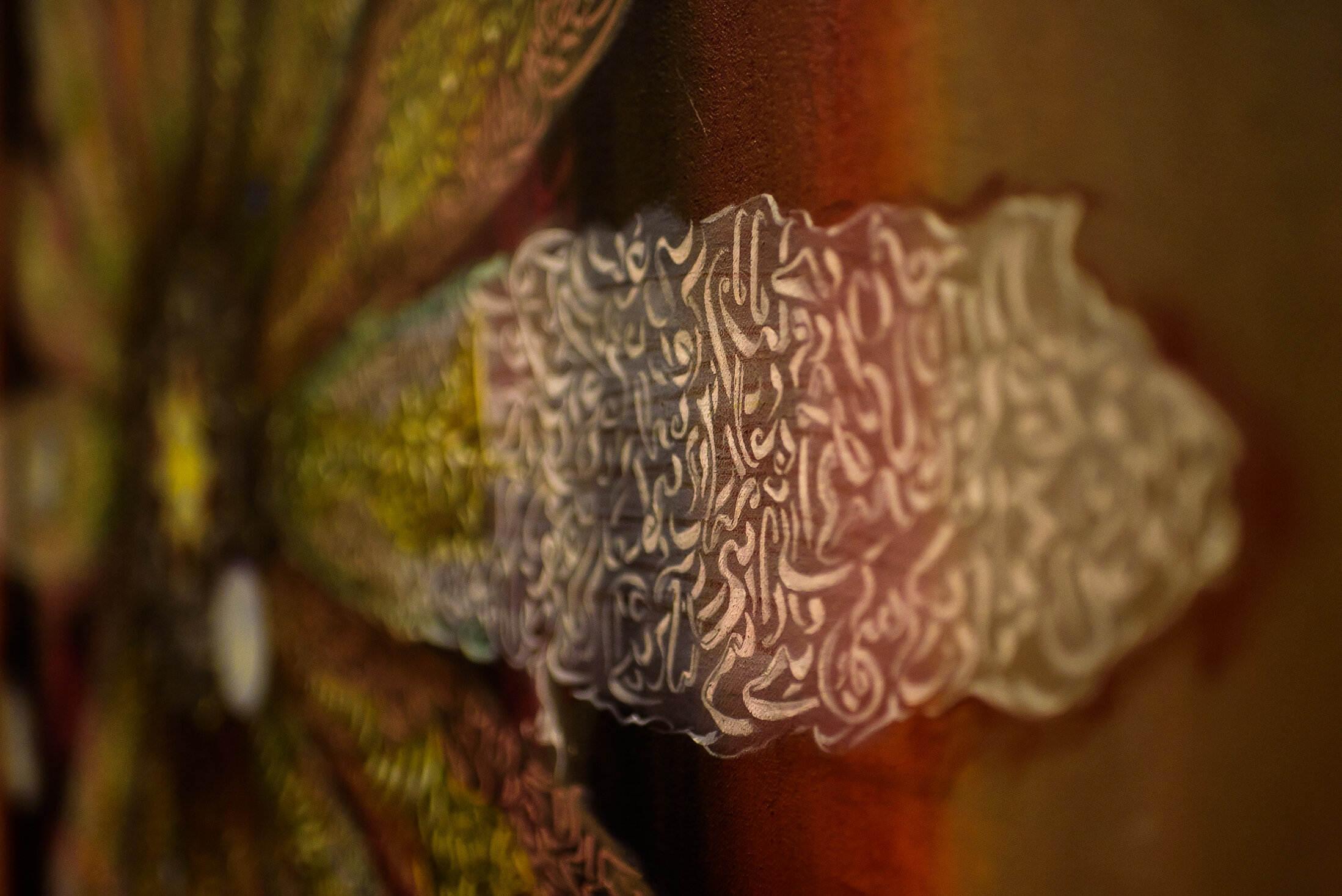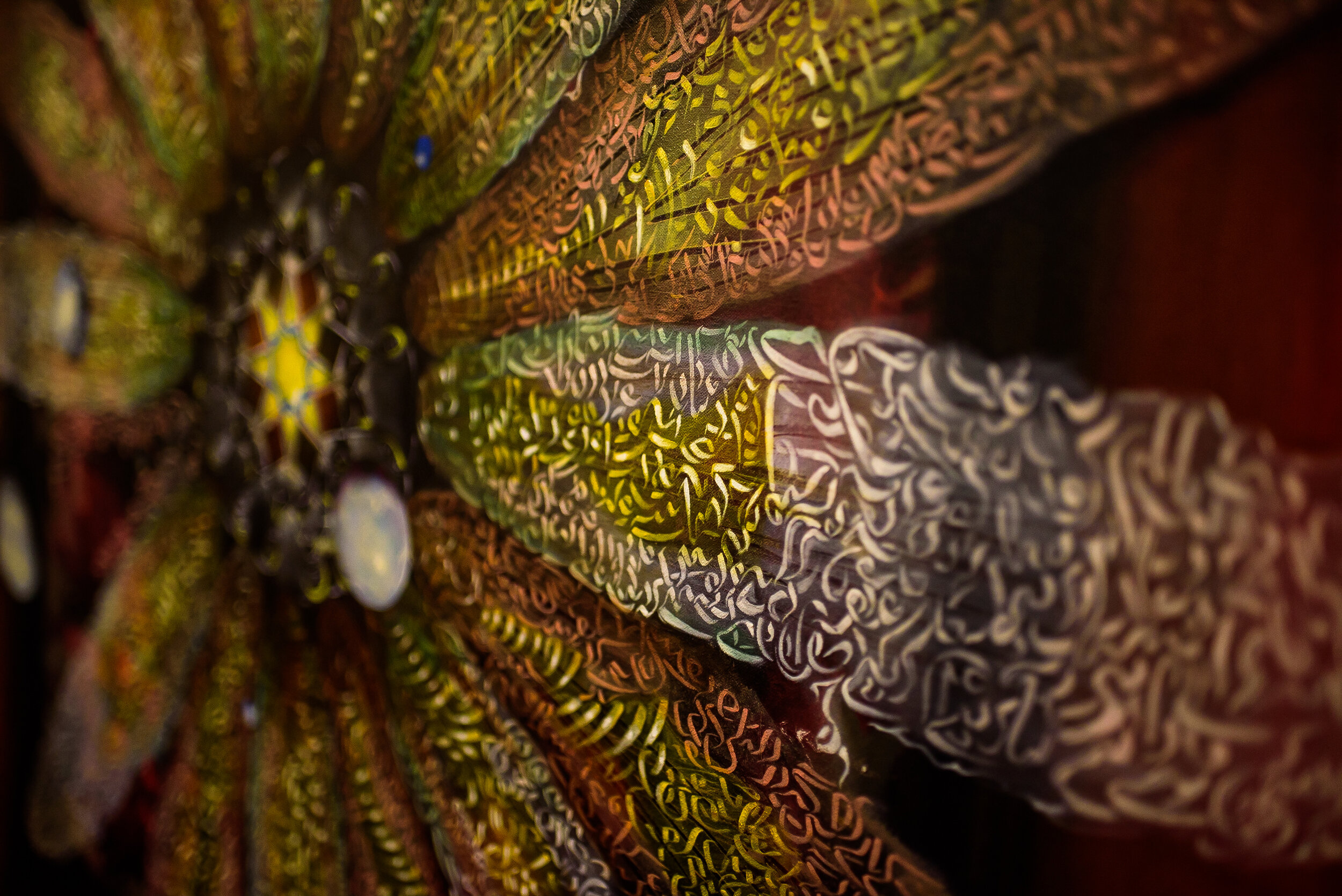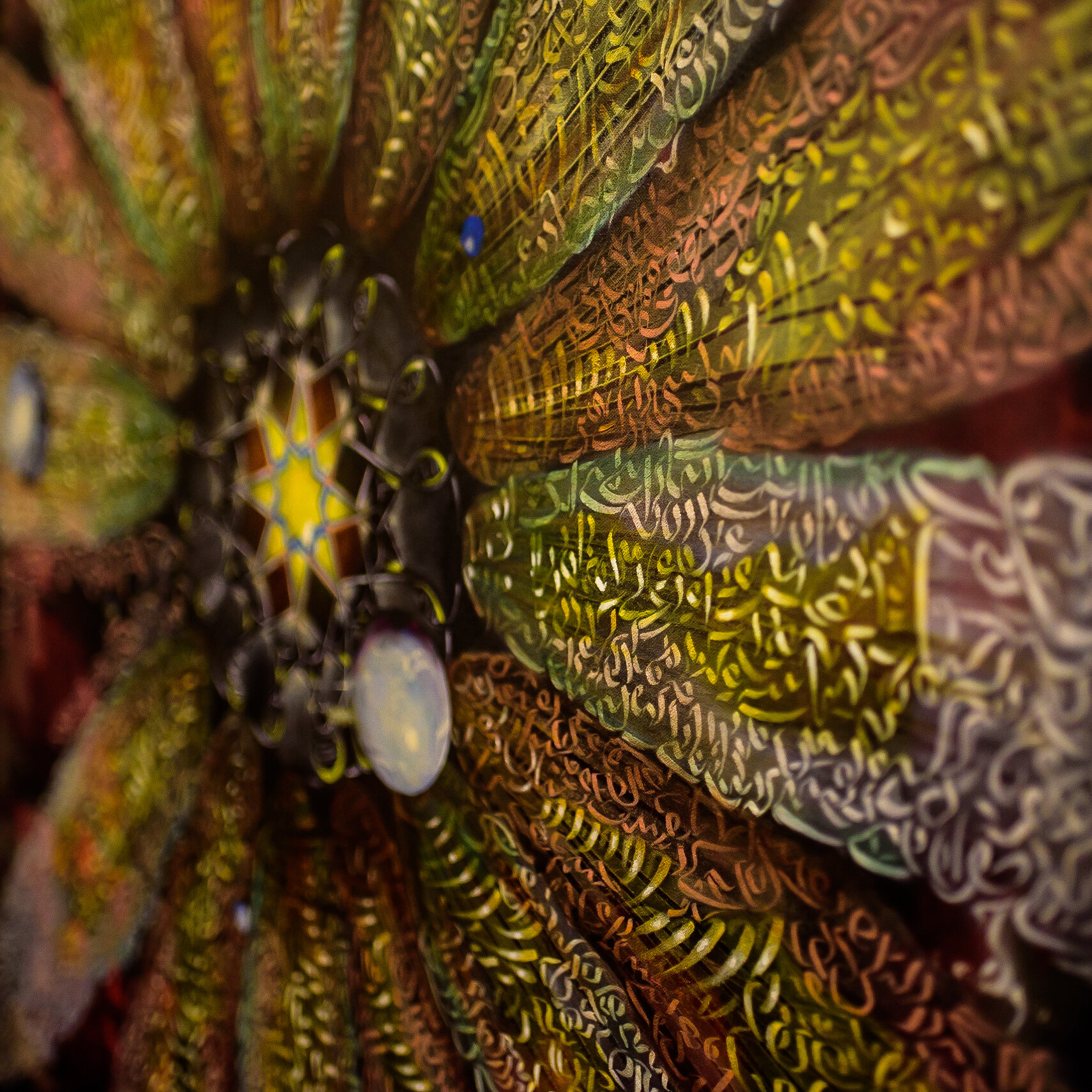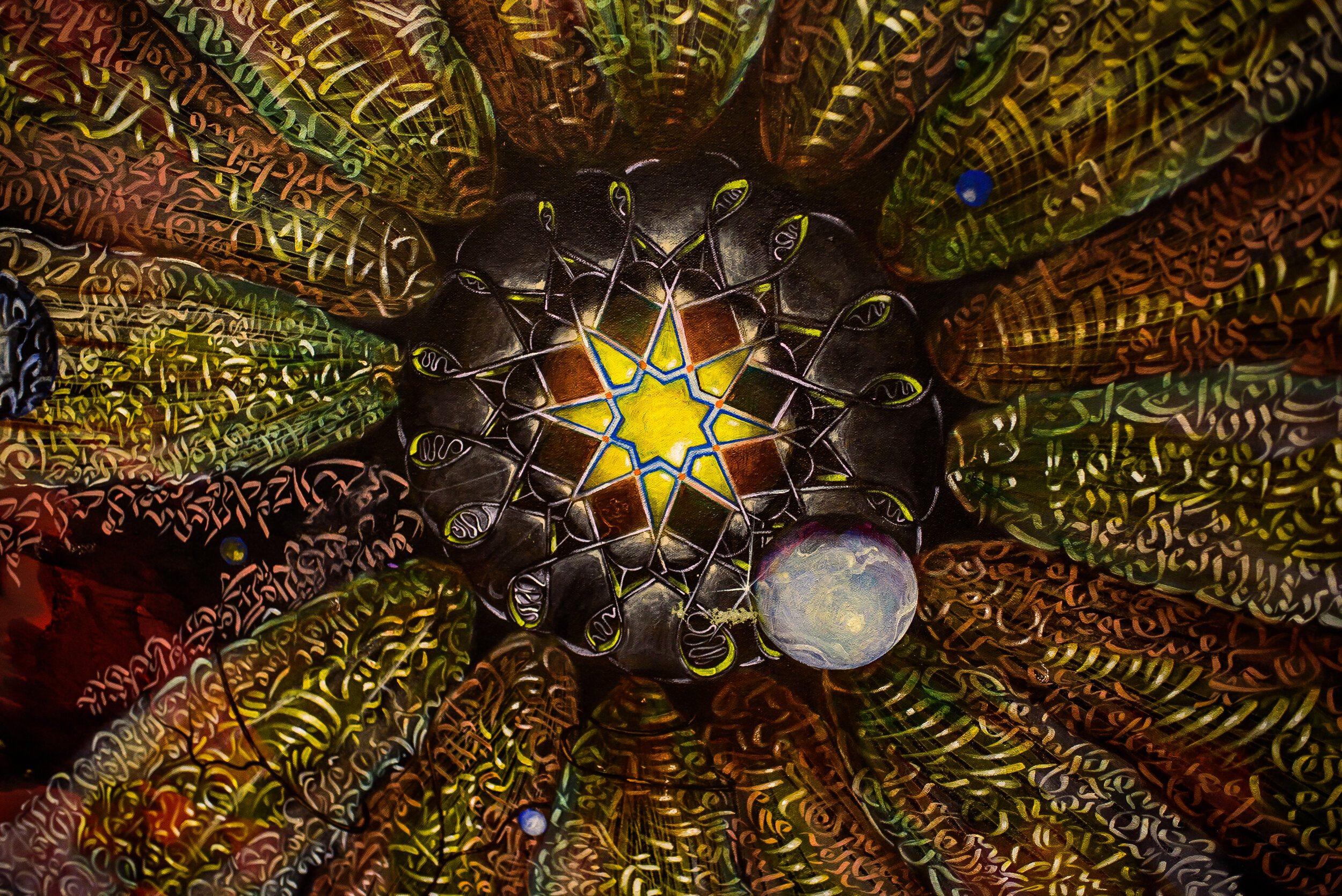THE RISE OF NATIONS | Enamel and Acrylic on Canvas | 120 cm * 120 cm
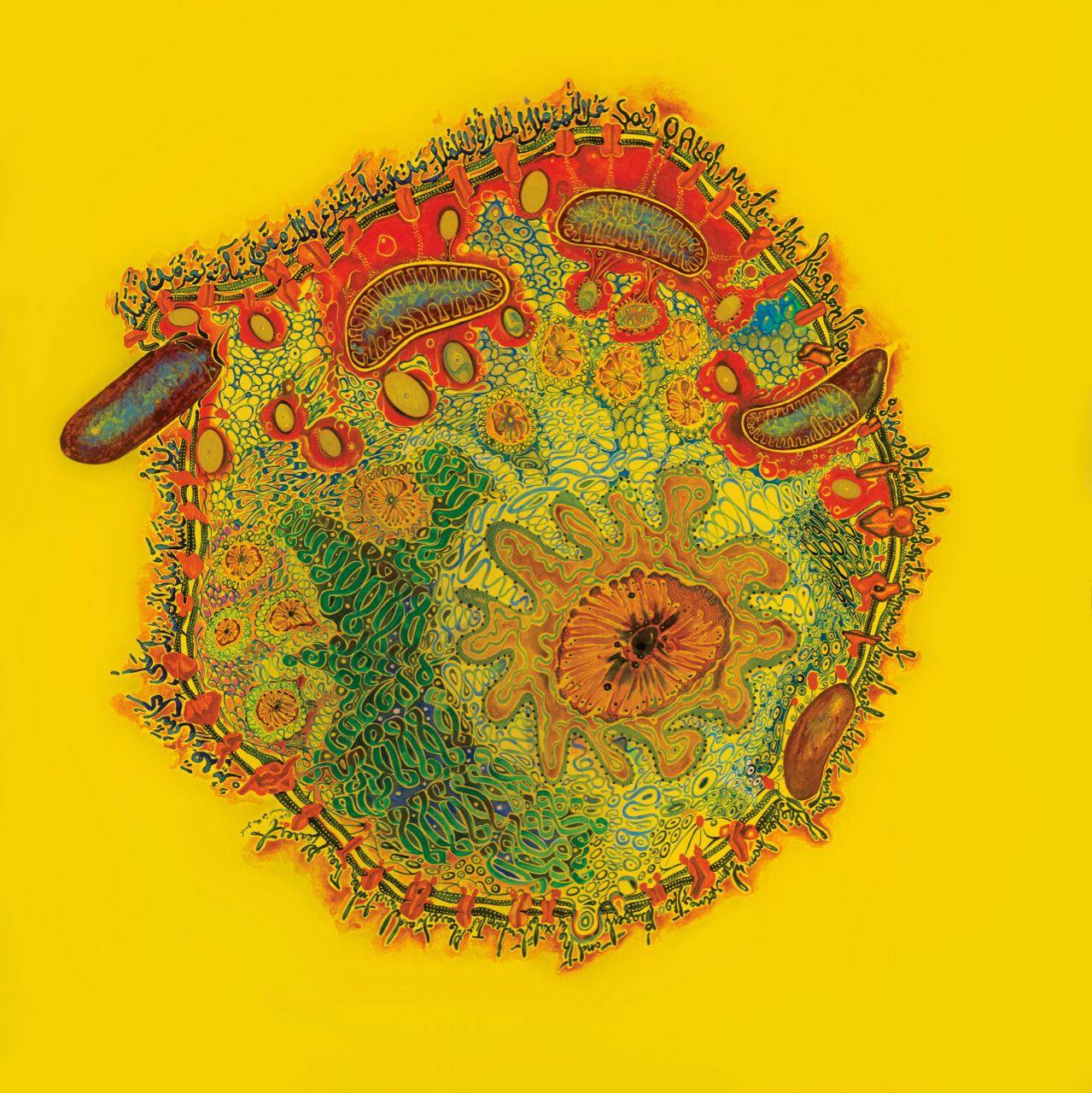
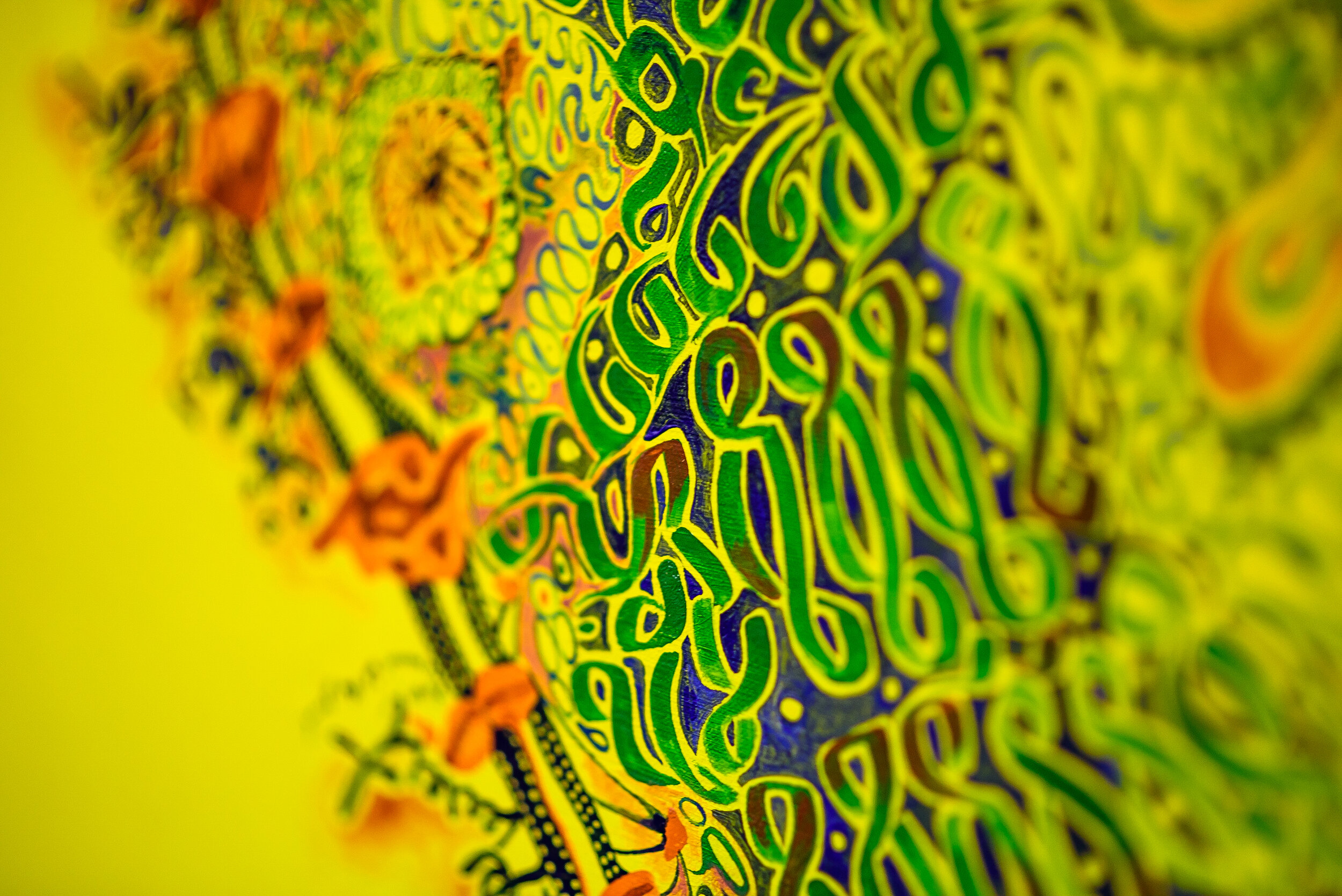
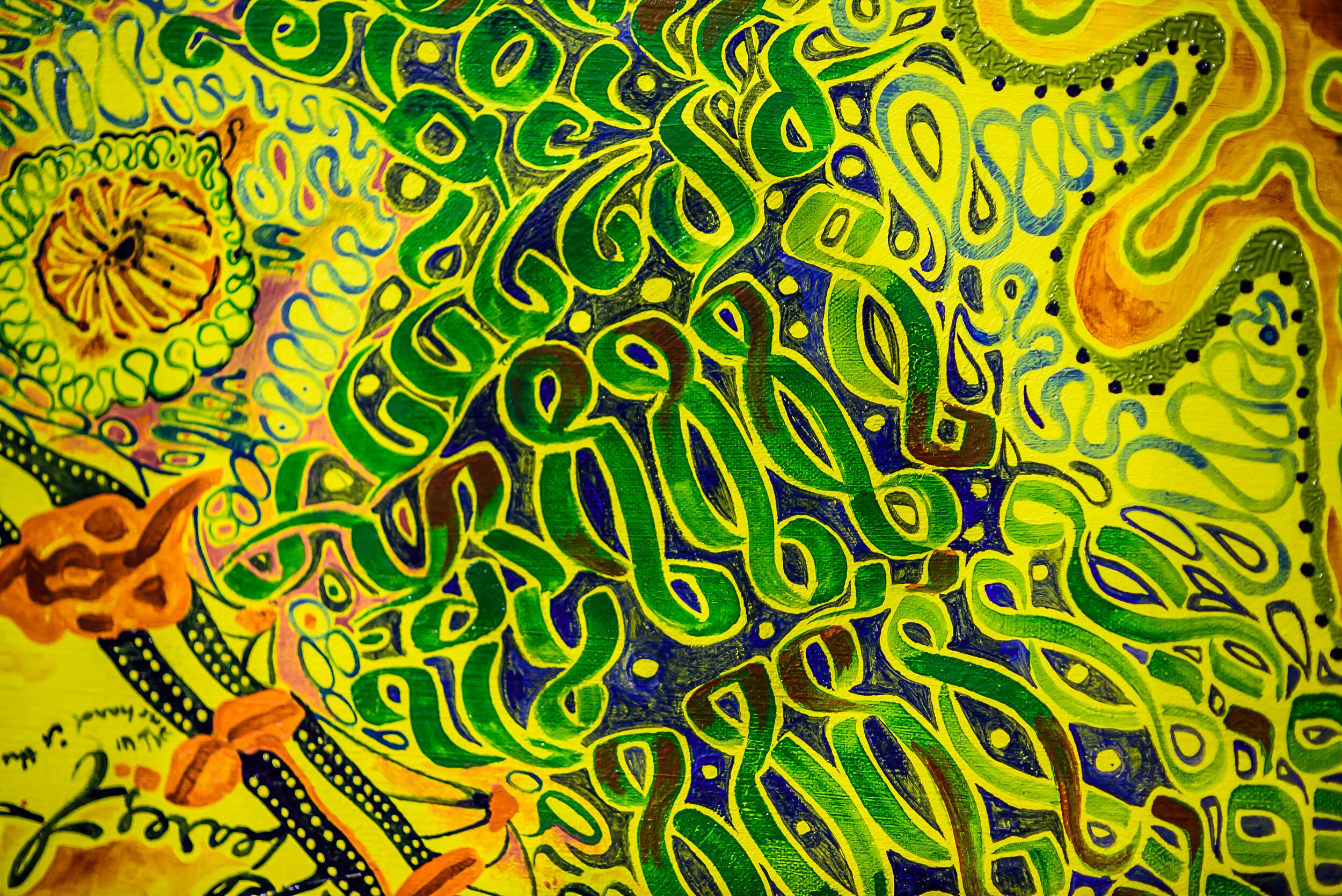
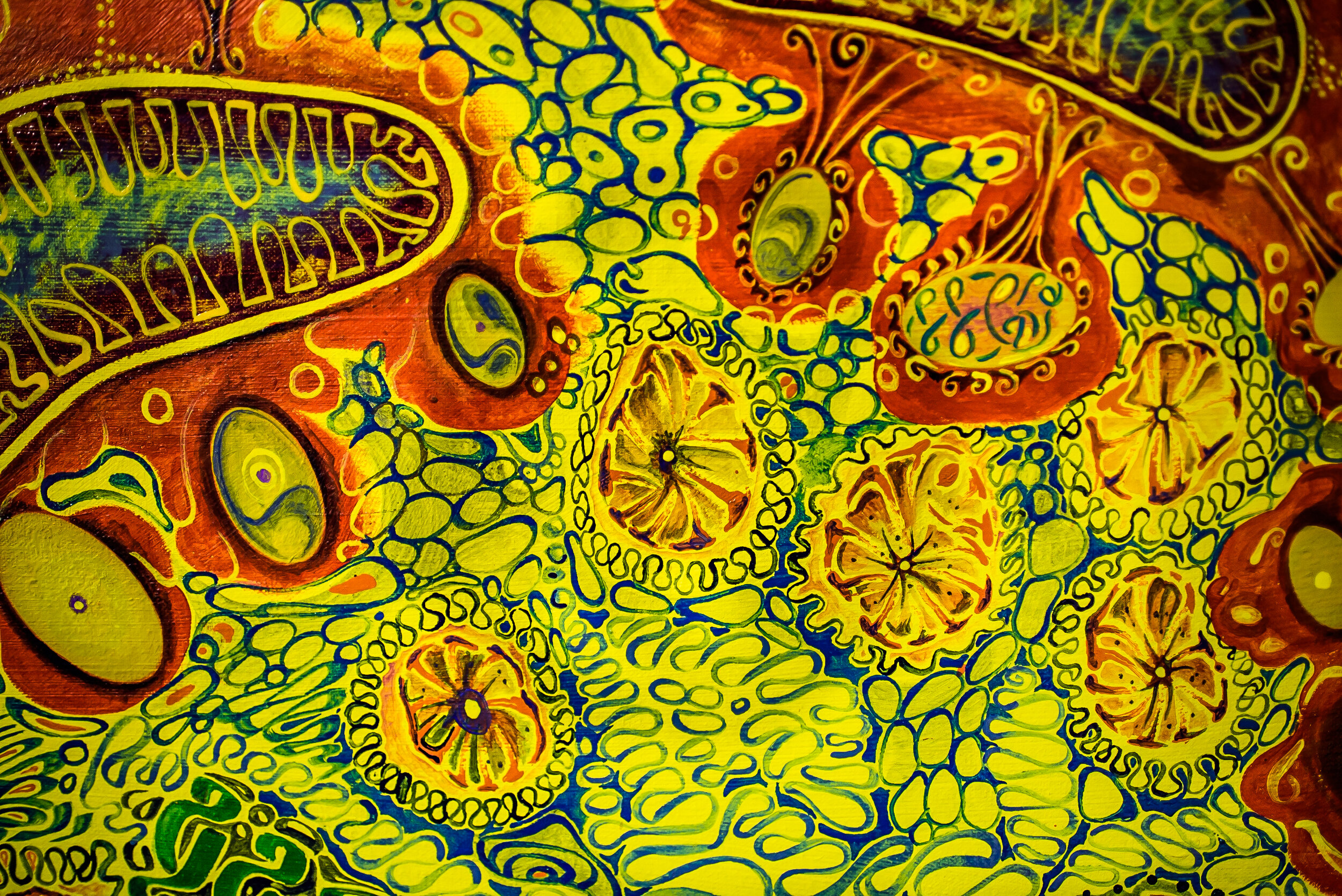
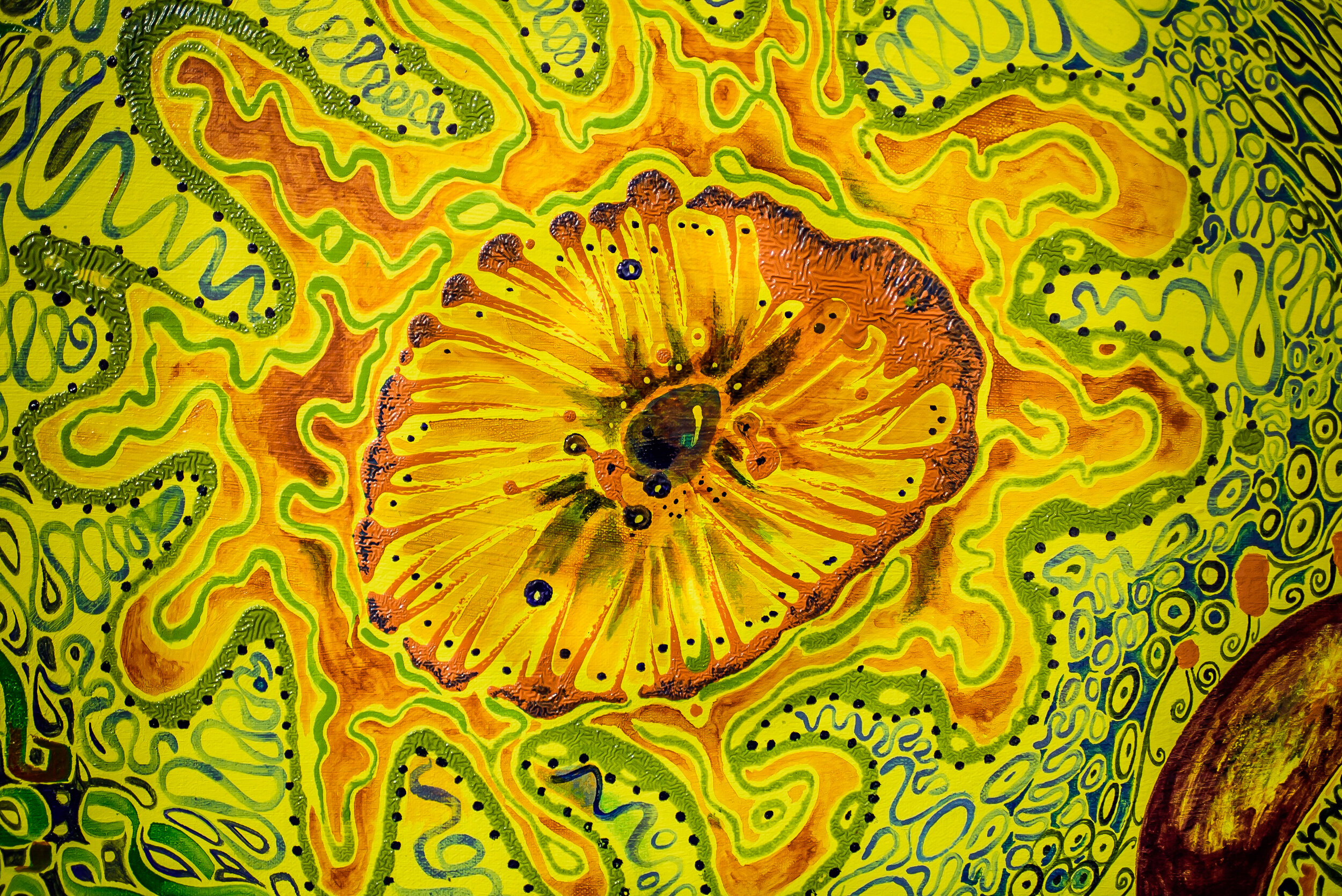
I know you can’t attribute human qualities to a germ or a country. But isn’t there a link if cells you and you make countries? What are those threads? Are all three – Cell-Civilian-Civilisation - organisations different only by their magnitude? Sugar to one is Dollar to another. Nucleus inside one is Government inside another. What if Europe or Mongolia were as alive as a patch of mould? What if a Human neurone had an energy economy as hungry as that of the US? Could one not learn something from their magnitudinally-other-member?
I’m not trying to be facetious. No mushroom, no matter how unsavoury, is capable of wiping out the planet in the way a nation can. No cell has created the plastic paradigm on Earth like the Human civilian. And questioning the existence of cancers ethically – not scientifically – is a little far fetched. Still, microbial life is so rich and full of lessons that you can’t but help see faces in those tiny cells.
A favourite of mine is the Mitochondrial Endosymbiotic event (cell). It occurred hundreds of millions of years ago – before any Human or animal appeared - because without it an animal form could not have arisen (civilian). It is what’s painted on the canvas. There’s a battle being waged. Two ancient cells are coming for one another – one to infect, the other to swallow. Their “reasons” are not too different from why civilisations go to wars. They are fighting for energy and resources.
Around the cell is a blue frilly membrane composed of a verse from the Quran (3:26). It talks about power, honour and the establishment of Kingdoms. Ironically, it’s revealed during the heat of a battle between the young Muslims and the pagan establishment. Here, too, two (proto)-civilisations are fighting for resources.
In the case of the latter, one party is a clear winner. For the former, a strange thing happens. In what is a win-win outcome, the larger cell acquires the smaller energetic cell and provides it with protection. The partnership creates a new hybrid cell – one more powerful and organised than its constituents. It becomes the building brick for higher organisms and eventually establishes, amongst many kingdoms, those of animals.
For brevity, as hypocritical as it sounds, I’m glad that in the latter battle my side wins. Otherwise I wouldn’t exist. But by bringing together and pressing the three orders into one image, I’m asking an uncomfortable question:
Is war ever necessary?
We are a savage, warring animal. Yet every cell in our body carries the message of peace. It reminds us of what’s possible through partnerships. Things unimaginable can be created out of trust. And if such small things can understand this, why can’t we?
UM.


